Introduction
Trends toward early corn planting and conservation tillage systems increase the risk of reduced and uneven stands and subsequent yield loss. Soil temperatures at planting are typically well below the optimal temperature for corn emergence, which is around 85 °F (29 °C). Soils under heavy residue are typically wetter and cooler than bare soils in the early spring, adding extra cold stress and disease pressure. In addition to moisture and temperature disparities within the seedbed, uneven residue can also cause variations in planting depth, all contributing to uneven emergence and “runt” plants (plants at least one leaf stage behind most others). To improve stand establishment, it is critical to mitigate these risks with good management practices.
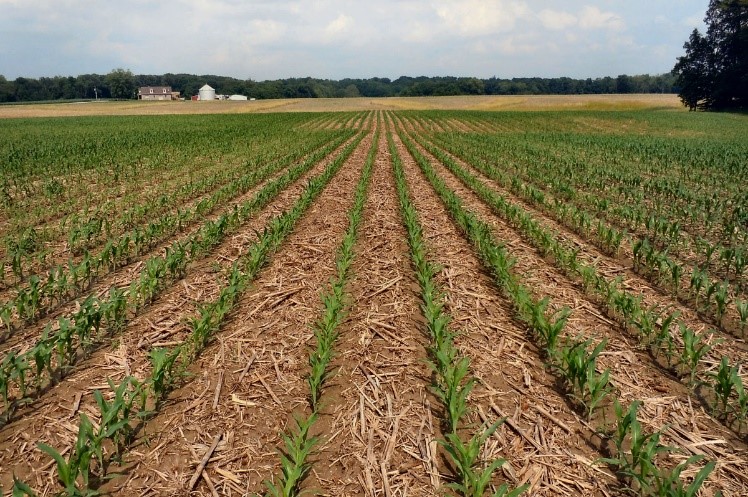
Hybrid selection for high-residue fields
Every year, Corteva Agriscience conducts extensive corn emergence trials under a wide range of stressful environments and soil types, including early planted and reduced-tillage fields. Using data from stressful locations, as well as lab assays that mimic extreme cold stress, Pioneer brand corn products are assigned a stress emergence rating, which is based on the genetic potential for a hybrid to establish stand under stress conditions (e.g., cold, wet soils or environments with short periods of severe low temperatures). Stress emergence ratings range from 1 to 9. Ratings of 7 to 9 indicate very good potential to establish normal stands under such conditions; a rating of 5 or 6 indicates average potential to establish normal stands under moderate stress conditions; and ratings of 1 to 4 indicate the product has below-average potential to establish normal stands under stress and should not be used if severe cold conditions are expected immediately after planting. In emergence trials conducted in high stress environments, hybrids with higher ratings typically have greater stand establishment than lower rated hybrids (Figure 1).
Pioneer brand corn products are also assigned high-residue suitability (HRS) ratings of highly suitable (HS), suitable (S) or poorly suited (X) for hybrid performance in reduced-tillage systems. Disease and stress emergence traits are key in high-residue fields. The HRS rating is calculated from the following five trait scores: stress emergence, northern corn leaf blight, anthracnose stalk rot, gray leaf spot, and Diplodia ear rot. The relative importance of each trait can vary by region. Therefore, the HRS rating is adjusted for each market region in North America.
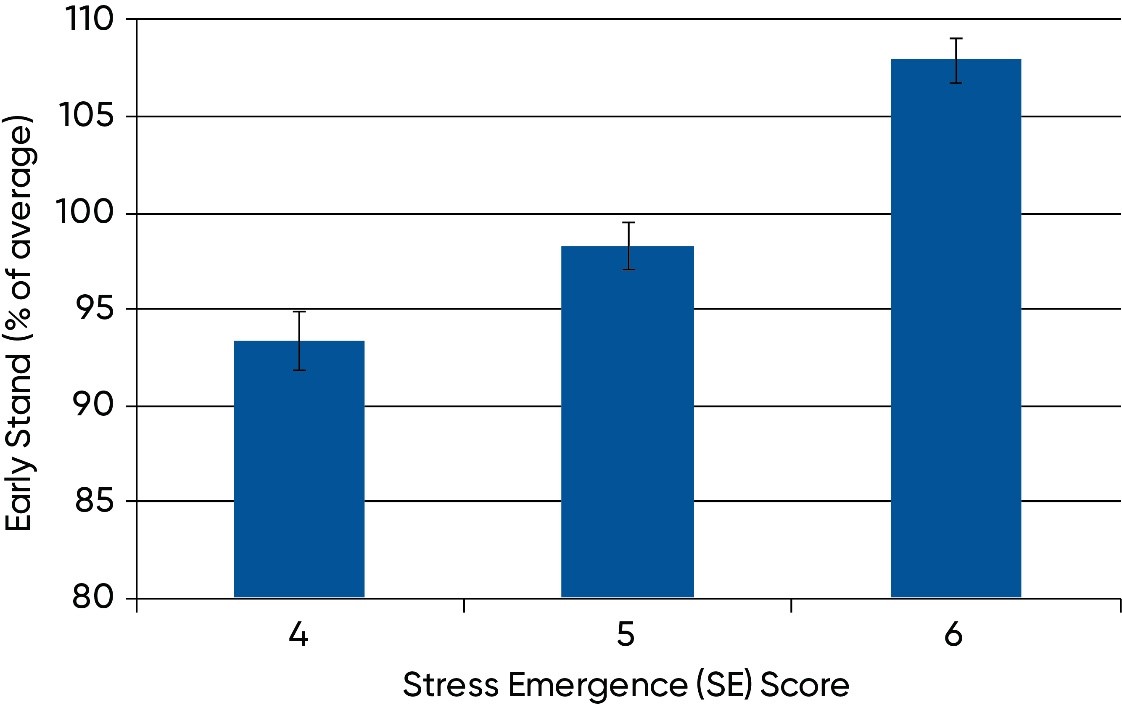
Figure 1. Relationship between early stand and stress emer-gence rating in stressful, high-residue Corteva Agriscience research locations in 2018.
Error bars represent +/- the standard error of the mean where n = the number of hybrids tested in each SE score category.

In Corteva Agriscience high-residue emergence trials, Pioneer® brand corn products with an HRS rating of poorly suited (X) produced lower stands on average than ones with a rating of suitable (S) or highly suitable (HS), regardless of temperature stress level (Figure 2).
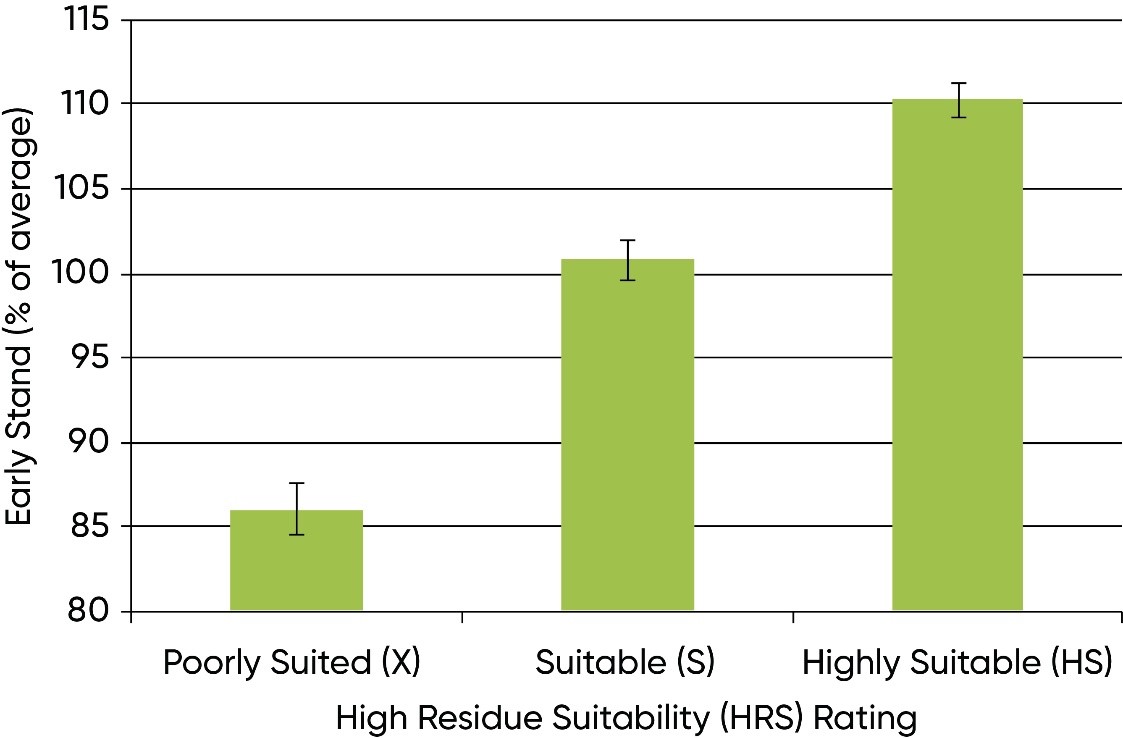
Figure 2. Relationship between early stand and high-residue suitability (HRS) rating in high-residue Corteva Agriscience research locations in 2018.
Error bars represent +/- the standard error of the mean where n = the number of hybrids tested in each HRS rating category.
Reduced-tillage systems can also lead to uneven stands and runts. In Corteva Agriscience trials, hybrids with a highly suitable (HS) rating tend to produce fewer runt plants (those at least one leaf stage behind) than suitable (S) and poorly suited (X) hybrids (Figure 3).
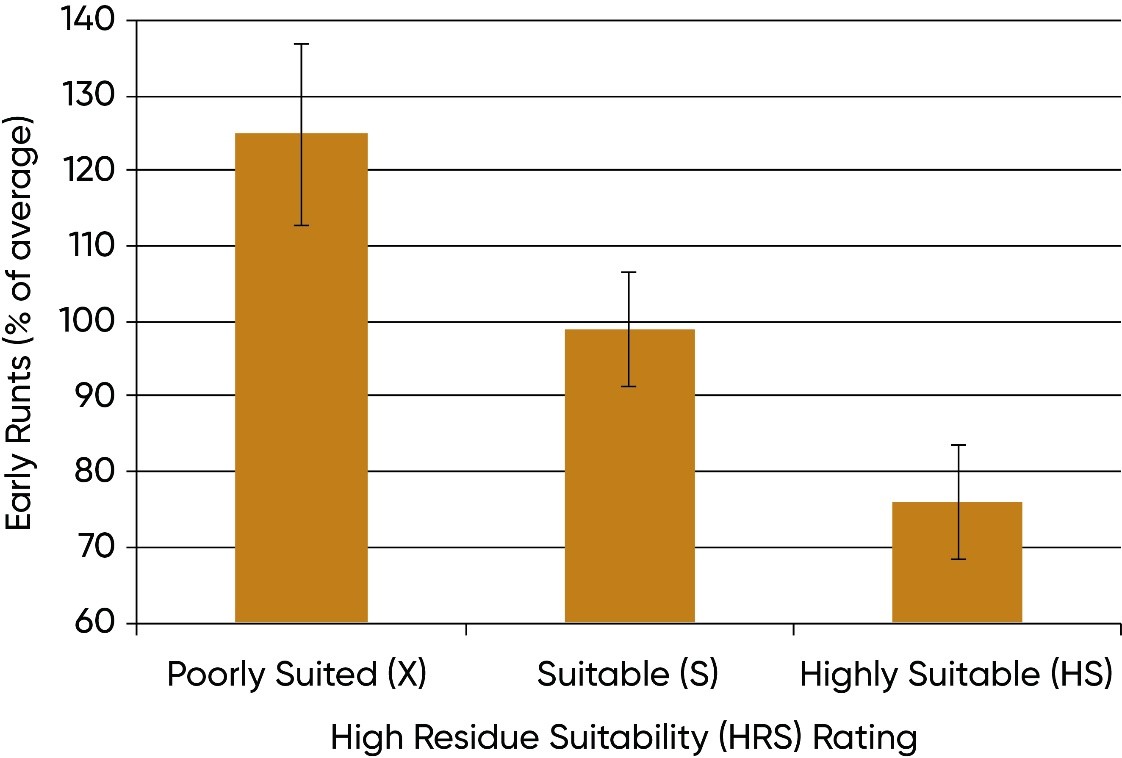
Figure 3. Relationship between early runts and high-residue suitability (HRS) rating in high-residue Corteva Agriscience research locations in 2018.
Error bars represent +/- the standard error of the mean where n = the number of hybrids tested in each HRS rating category
Stress Emergence
Genetic potential for a hybrid to establish stand under stress conditions (1-9 scale)
- 7-9 = Good emergence potential
- 5-6 = Average potential
- 1-4 = Below-average potential
High Residue Suitability
Ratings of hybrid performance in reduced-tillage systems.
- Highly Suitable (HS)
- Suitable (S)
- Poorly Suited (X)
Suitability rating based on field observations and a weighted calculation of ratings for:
- Gray leaf spot resistance
- Stress emergence
- Anthracnose stalk rot
- Northern corn leaf blight
- Diplodia ear rot
High Residue Suitability ratings may vary by environment and geography.
Planting in High-Residue Fields
Reduced-tillage systems present challenges to growers. Heavy residue can hinder planting efforts (Figure 4). Planting problems, such as hairpinning, sidewall compaction, lack of consistent seeding depth and failure of the furrow to close properly over the seed, reduce critical seed-to-soil contact.
To help improve stand establishment in high-residue systems, it is important to set up and operate the planter appropriately. Below are some general guidelines for planting in high-residue seedbeds. However, since planter operation may vary widely with soil type and conditions, it is helpful to consult with your agronomist or other no-tillers in your area to determine the best equipment and practices for your farm.
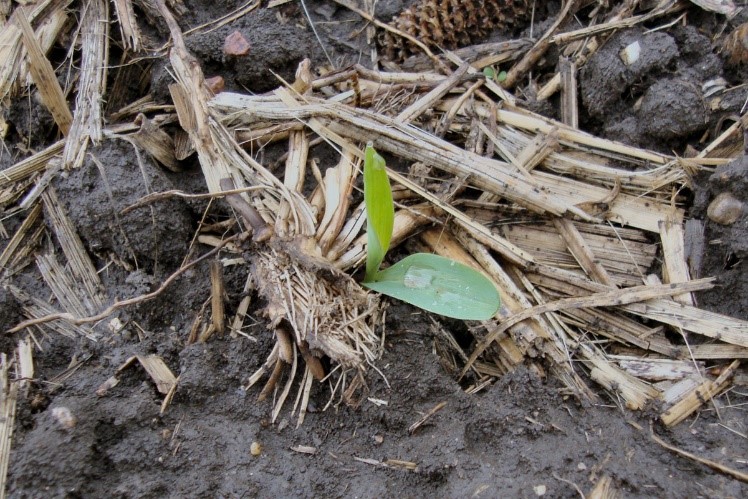
Figure 4. Heavy residue in corn-on-corn field provides physical barriers to seedling emergence in Corteva Agriscience corn emergence trials.
Row Cleaners
The use of row cleaners (“residue managers”) to clear the planting row of residue can aid the planting and emergence process by removing the physical barriers on the soil surface and speeding up soil warming after a cold spell (Figure 5). Spoked or spider row cleaners can be advantageous in heavy residue and wet soils. These row cleaners can be set to move residue without disturbing the soil, allowing warming and drying on the row. Floating row cleaners that better follow the contours of the soil surface are also available from some manufacturers.
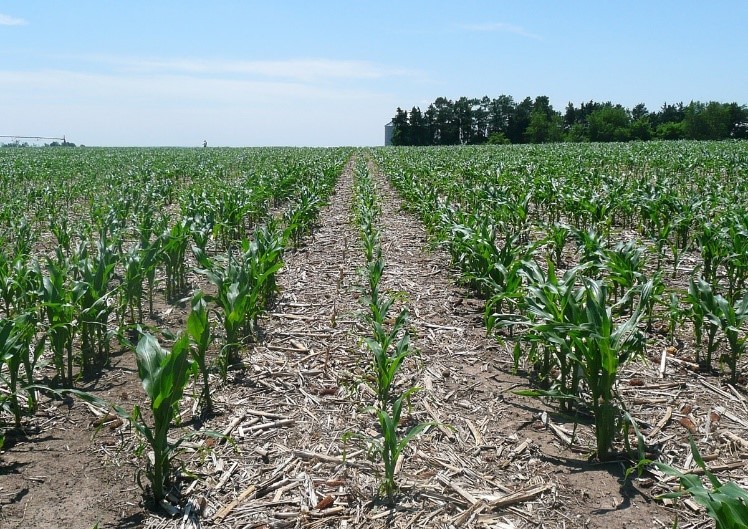
Figure 5. Row cleaner failure (middle row) reduced stand and vigor compared to cleaned strip (right row) in corn-on-corn field near Schuyler, NE.
Planting Depth
Planting slightly deeper (at least 2 inches deep) can help overcome some of the moisture and temperature variability found near the soil surface in reduced-till soils. An aggressive setting for down pressure may be needed to keep gauge wheels in solid contact with the ground. Seed firmers can also help with seed placement in the planting slot.
Closing Wheels
Several variations of closing wheels are available to help close the planting furrow, depending on soil tilth and moisture. Spiked closing wheels tend to work better on heavy or wet soils, reducing sidewall compaction and closing the planting slot. Alternatively, growers can use one spiked wheel with one rubber wheel.
Planting Date
Because of its impact on stand establishment and yield, choosing a planting date is one of the most important crop management decisions for growers. Planting when the soil is too wet can interfere with row closure and cause sidewall compaction. Allocate extra time for the soil under heavy residue to dry before planting. Soil temperature data collected at Corteva Agriscience research plots show that planting at soil temperatures below 50 °F (10 °C) often leads to reduced stands. Also, it is important to monitor weather patterns. Snow, cold rain or extended periods of cold weather after planting imposes significant stress on corn.
Good residue management practices are crucial to realize the benefits of reduced-tillage systems. Selecting the right hybrid, modifying the planter and choosing a suitable planting date all help improve stand establishment in high-residue fields.












